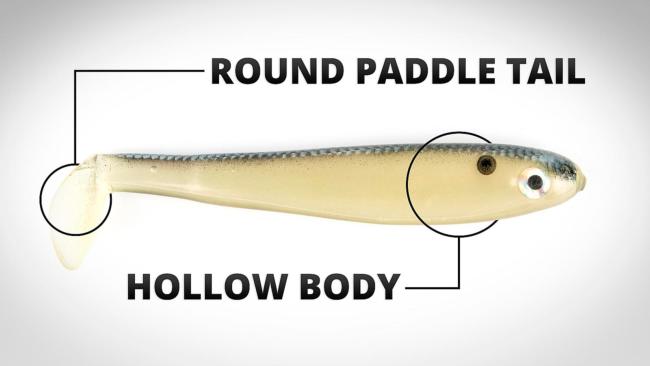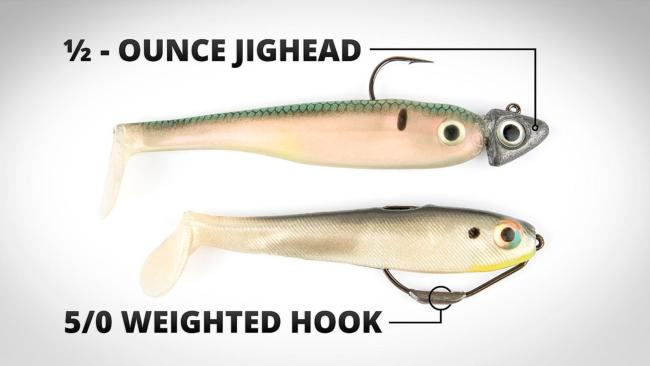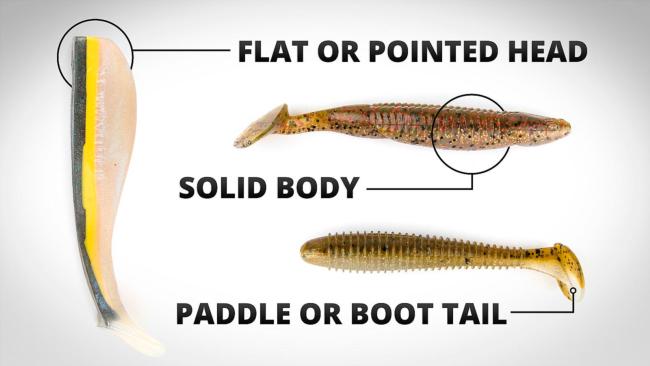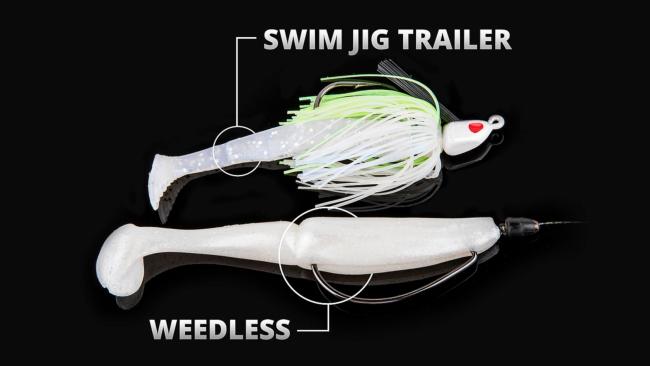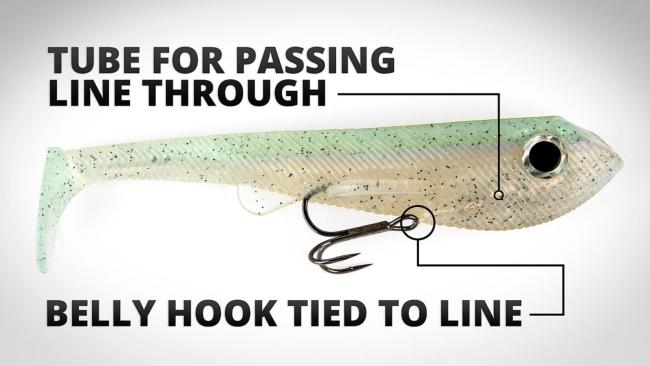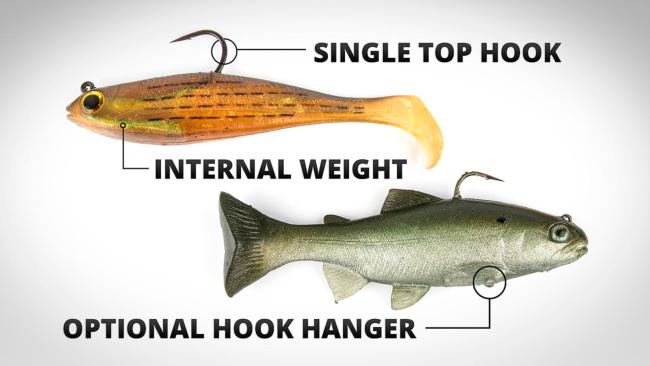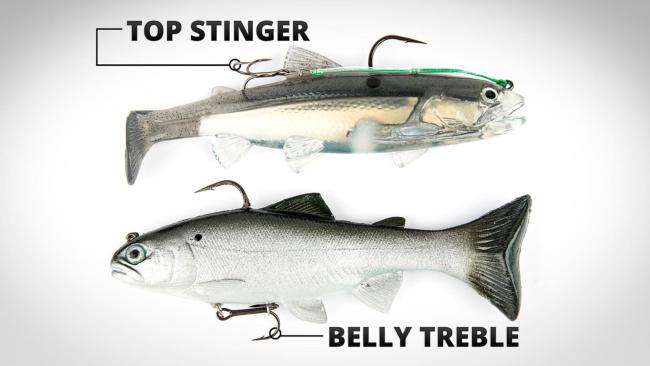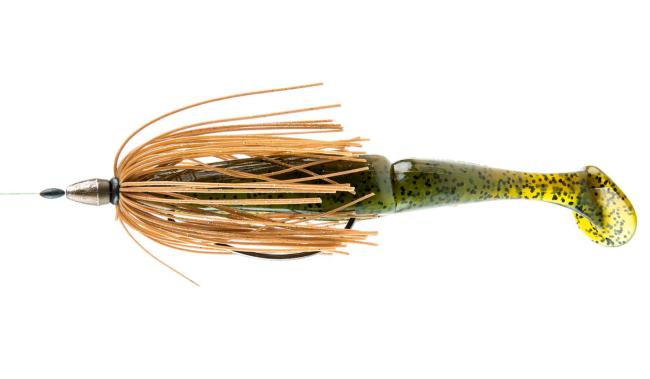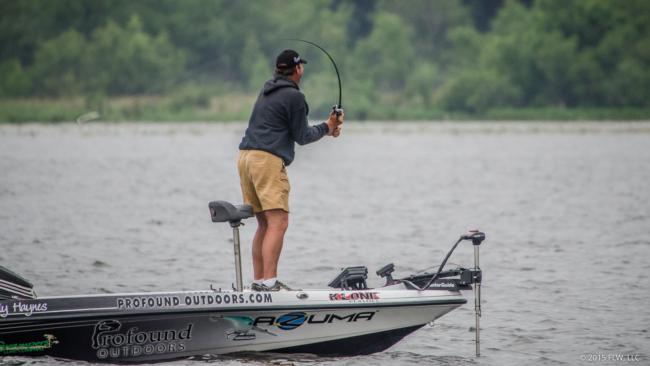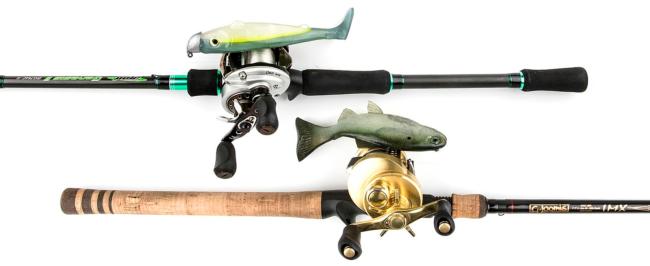Fishing 101: Soft-Plastic Swimbaits
Learn how to catch more and bigger bass with swimbaits
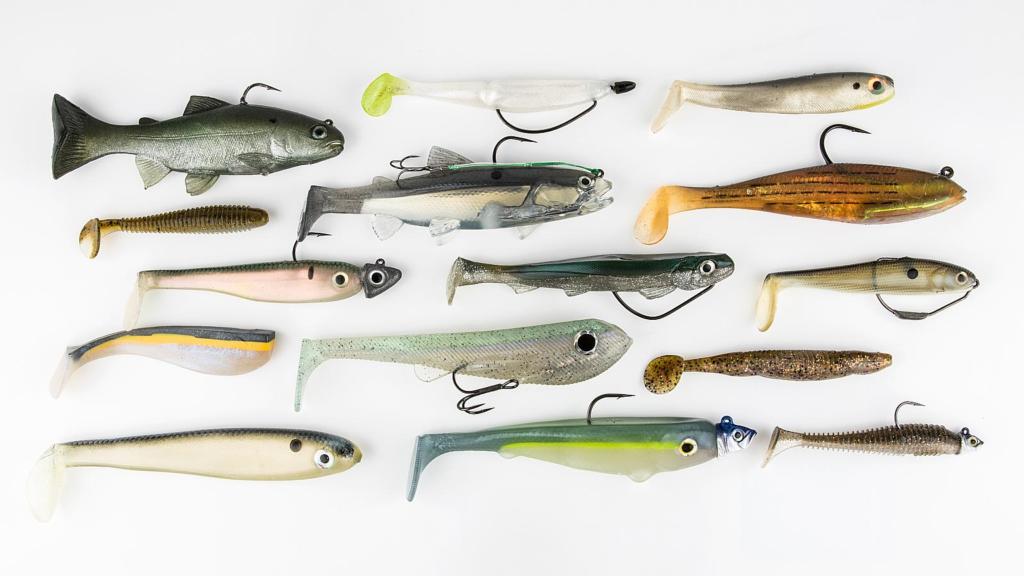
Swimbaits have progressed through the years.
In the old days, there was the Mister Twister Sassy Shad and a handful of others. Then bass anglers enjoyed a swimbait renaissance of sorts that began with Western hawg hunters chucking jumbo baits for double-digit-sized fish. The effectiveness of the swimbait to get big bites soon trickled down from the trophy hunters to the trophy earners – i.e., tournament anglers – who rediscovered old swimbaits and adapted new ones to the business of catching five keeper bass a day.
While all swimbaits accomplish the same thing – imitating a prey fish swimming through the water – there are now hundreds of baits from which to choose, and there are models for tackling just about any scenario.
Your first step in learning to be a better swimbait angler is to understand the categories of swimbaits on the market and some ways in which to rig them.
For the soft-plastic variety of swimbaits, this guide will get you started.
Part I: The Categories
It’s very challenging to categorize swimbaits because there’s so much variation in each category. For instance, two swimbaits might share identical design characteristics, but one might be triple the size of the other. Thus, their uses vary tremendously.
What follows is a very generalized list of categories, with further explanation provided for each.
Hollow Paddle Tail Swimbaits
Examples: Basstrix Swim Bait, Strike King Shadalicious, Yum Money Minnow, 6th Sense Core X Swimbaits
Key design features: hollow body, round paddle tail hangs below the body, narrow rear section, round head with realistic eyes, many colors available
Size range: 3 to 8 inches
Best uses: They work just about everywhere, though they aren’t ideal trailers on swim jigs and ChatterBaits because there’s no “meat” in the hollow center for holding them in place. Fish them around grass, under docks, on ledges, for schoolers, on the surface or simply for covering water just about any time of year.
Rigging variations:
Rigging keys: Make sure it’s straight on the hook, and match the weight to the speed and depth of retrieve. Jigheads are best for open water and slow-rolling presentations. In grass, use a weedless wide-gap hook. Some models require a belly weight to serve as a “keel” for proper swimming action.
More info: Jay Yelas used the Basstrix to win the 2007 Walmart FLW Tour Angler of the Year title, which ignited – or perhaps, more accurately, publicized – the swimbait craze among tournament anglers. More recently, hollow swimbaits up to 7 or 8 inches in length have become popular for summer ledge fishing. This is a workhorse swimbait category. Hollow paddle tails can literally do anything you want a swimbait to do. Because they’re hollow with thin walls, hook-up ratios are usually pretty high.
Solid Paddle Tail Swimbaits
Examples: Gambler EZ Swimmer, Gene Larew Sweet Swimmer, Keitech Swing Impact, Reaction Innovations Skinny Dipper, Little Creeper All American Trash Fish, Scottsboro Tackle Company Swimbait, Big Hammer Swimbait, Z-Man DieZel MinnowZ, Yamamoto Swimbait
Key design features: solid body, paddle- or boot-shaped tail usually hanging beneath the body, round or pointed head on some models, flat “face” on some models to fit with a jighead, narrow body on most baits for snaking through cover, wide range of realism, hook slots on some models prevent snags and increase hookup ratio
Size range: 2 to 9 inches
Best uses: You name it, and this category has it covered thanks to the incredible number of swimbaits that fall under its umbrella. They can be fished deep or shallow, through grass or wood, skipped under docks, or on an umbrella rig. Some can be waked on the surface.
Rigging variations:
Other rigging options: open jighead, weightless for waking, weedless with a weighted hook, umbrella rig, under-spin trailer, ChatterBait trailer
Rigging keys: Choose a hook that reaches back into the body, but not into the part of the tail that actually “swims.” Jigheads work best for open water and umbrella rigs. When using weighted hooks, adjust the weight to fish the bait anywhere from the surface to double-digit depths.
More info: There are a lot of subcategories within the solid-body category. For instance, the Skinny Dipper and EZ Swimmer are great “grass swimbaits.” The ribbed Keitech has a very thin tail and paddle, for plenty of action even at the slowest retrieve speed. Scottsboro’s swimbaits are popular for ledge fishing, and the larger sizes bridge the gap between “standard” and “jumbo,” making them perfect for Eastern big-bass haunts such as Lake Guntersville. The Trash Fish is another great clear-water bait because of its natural appearance and subtle swimming motion. Basic swimbait “tails” such as the Sweet Swimmer, Big Hammer and DieZel MinnowZ have very little detail and flat faces for fitting them to the back of a jighead. A dab of Super Glue locks the two together.
More Rigging Tips:
Bring Super Glue: A dab of Super Glue helps to secure a swimbait to the jighead.
Trim the tip: If your jighead has a flat surface on the back of its head, trim just a tiny bit off the front of the swimbait to create a matching flat surface for a better connection. Super Glue seals the deal.
Don’t fear football heads: Though not commonly sold for swimbaits, a football head will often crawl over and through rock better than a more streamlined head. A Keitech Swing Impact FAT or other small swimbait can be great for grubbing the bottom with a football head.
Line-Thru Swimbaits
Examples: Predator Swimbait Company Line Through, Optimum Baby Line Thru, Top Shelf Original, Castaic Baits Catch22
Key design features: belly hook connects directly to fishing line, tube for passing line through the body, paddle tail on many models, V-shaped or flat tails on some jointed and ultra-realistic models, some have wider bodies
Size range: 3 to 10 inches
Best uses: The line-thru feature was designed to improve hook-up ratios when using medium to large swimbaits. How it works: The line passes through the bait’s body and is tied directly to a belly hook on the underside. The hook comes free on the hookset, and the angler can battle directly with the fish. Traditionally, line-thru swimbaits have been used for shallow to mid-depth fishing and for targeting trophy bass, though smaller versions are available, and specialty designs allow for fishing in deeper water. Avoid grass where the exposed belly hook can snag.
Rigging keys: There’s not much to it, though you might consider a specialty treble hook with four points, or one designed specifically for a line-thru.
More info: Because the line-thru is pre-weighted, it’s really a simple swimbait to use. It shines when big bass are prowling the shallows. Use it for skipping docks or for general search duties in clear fisheries. Some of the smaller sizes are perfect for targeting schooling bass in open water. Schoolers tend to swipe or bash a bait, and the treble hook could improve your hook-up ratio in that scenario.
Top-Hook Swimbaits
Examples: Huddleston Deluxe 68 Special, Osprey Tournament Talon Top Hook, Mattlures Ultimate Bluegill, LIVETARGET Goby Paddle Tail, Storm WildEye series
Key design features: single top hook, internal weight, wedge and paddle tails, optional bottom hook hanger on some models, realistic profiles and finishes
Size range: 4 to 14 inches
Best uses: As this category grows, so does the number of uses. Traditionally, top-hook swimbaits have been big-bass seekers designed to be reeled at slow speeds where the hawgs live. They come through cover OK, but aren’t ideal for heavy grass or brush.
Rigging variations:
Rigging keys: Fish each bait straight out of the package if you like, though be sure to choose a model with a sink rate or depth rating that matches the target area. Otherwise, there are dozens of ways to customize top-hook swimbaits, ranging from adding hooks to shaving tails for more action to custom paint jobs.
More info: No self-respecting bass angler should be without at least one or two big top-hook swimbaits. If you’re having trouble making the jump to the jumbo models, get one in the 5- to 7-inch range. Also, if you’re having trouble hooking up with a top-hook model, and the cover allows it, there are several swimbaits on the market that swim and look just like the ones listed here, but come pre-rigged with a treble hook on the belly.
Fringe Swimbait Categories
Swimbaits aren’t limited to the categories listed above. There are plenty of specialty models and oddball creations. A few examples:
- Castaic Baits Platinum Naturals Series – Each has a jointed body such as is common on hard-plastic swimbaits, but they’re soft. Species covered include bream, bass and shad. They’re big baits, too.
- Huddleston Deluxe Weedless Shad – With the popular Huddleston vortex tail, but in a smaller weedless package featuring a sheathed hook, this pre-rigged bait was made to swim through cover.
- Jerry Rago Live Trout Soft Bait – It’s a soft-plastic swimbait with a hard-plastic lip that helps provide the action and depth control.
- Jackall Swimming Ninja Swimbait – This realistic swimbait is built like a top-hook, but has a pair of belly treble hooks.
- Yamamoto Swimming Senko – Technically, it’s a solid paddle-tail swimbait, but it looks more like a Senko and a swimming tail stuck together. The length of the body allows it to “clear” the skirt of a ChatterBait for a cool swimming combo.
Part II: 6 Must-Use Swimbait Rigs
1.The Grass Rig
- Gambler Big EZ
- 1/8-ounce bullet sinker, pegged
- 7/0 wide-gap swimbait hook
- optional punch skirt
2.The Ledge Rig
- 6-inch Scottsboro Tackle Company Swimbait
- 3/4-ounce, 6/0 Revenge Swimbait Hedz XL
3.The Dock Rig
- 3:16 Minnow
- 7/0 Gamakatsu EWG Monster Hook
4.The Hawg-Hunter Rig
- Huddleston Deluxe 68 Special
- Owner Stinger Harness Rig (optional, not shown)
5.The Schooler Rig
- 3.8-inch Keitech Swing Impact FAT
- 1/2-ounce jighead
6.The Do-All Rig
- 4 1/2-inch Strike King Shadalicious
- 3/32-ounce, 5/0 wide-gap swimbait hook
Part III: More Advice
Size – Three factors should influence size choice: 1. Forage size – Try to mimic what’s naturally available in the system; 2. Bass size – At a big-bass fishery, throw a big bait, or vice versa; 3. The bite – If fishing is tough, try downsizing swimbaits.
Profile – Length isn’t the only important dimension. A swimbait’s girth, thickness and resulting profile also should be considered.
Color – Shad patterns are most popular and they certainly work, especially where bass are feeding on shad. Semi-translucent swimbaits work great in clear water. Some glitter or a little shiny paint adds the effect of scales. In the shallows, try green pumpkin or combinations of green, brown, purple and orange – the colors of bream. Also, pure white and pure black can show up in the depths or in murky water. And consider chartreuse if matching a ChatterBait or spinnerbait skirt.
Speed and action – Pay attention to how a swimbait looks when reeled at various speeds. Some baits don’t swim well at extremely slow speeds. Others roll or blow out at high speeds. Weight and rigging also affect a swimbait’s action, so if it looks a little funky at first, you might simply need to reduce or increase the weight or try a hook of a different size.
Tail and body movement – Some of the big trout imitators have very subtle action. Their tails swim side to side, but their bodies have little movement. The intent is to produce an extremely natural bait imposter in clear water. Other swimbaits have more aggressive tail movements, while some baits’ bodies roll and sway. It’s tough to say which action style is best, but if you think fish are more aggressive, try one with more action. If conditions are tough or the water is very clear, a more subtle swimbait might be better.
Hookset – Mastering a swimbait hookset can take some practice. The key is to wait to set the hook until the line has gone taut. When a fish hits, keep reeling until you feel pressure, then sweep-set.
Part IV: Equipment
Rods – Jumbo swimbaits require specialty rods that rate as heavy or extra-heavy power, but with a moderate action that makes casting big baits easier. Most are 7 feet, 10 inches or so in length. The more common middle ground swimbaits can usually be fished on your favorite jig, Rat-L-Trap or all-purpose junk/light flipping rod – something in the neighborhood a 7-foot, 3-inch to 7-foot, 6-inch, medium-heavy or heavy rod with a moderate to fast action. Smaller swimbaits might need to be thrown on spinning rods or a lighter casting model. No matter which rod you use, if you choose to fish with low-stretch braided line, error toward a more moderate rod with some “give” to counteract the line’s lack of it. And if you’ll be driving a wide-gap hook through a swimbait body, a heavy-power rod is a good choice.
Reels – Jumbo baits require specialized reels. Many anglers prefer traditional round-bodied reels to low-profile models. These big metal-framed jobs have heavy “guts” and hold a ton of heavy line. For everything else, stick with a low-profile baitcaster with about a 6.3:1 mid-range retrieve speed.
Line – Fluorocarbon is the most popular line choice for swimbaits. Use the heaviest you can get away with based on water clarity. Usually, 12- to 17-pound test will work for mid-sized swimbaits. For jumbo baits, some anglers use 20- to 25-pound-test fluorocarbon or monofilament. Others prefer 50- to 65-pound-test braid with a clear leader of fluoro or mono.
